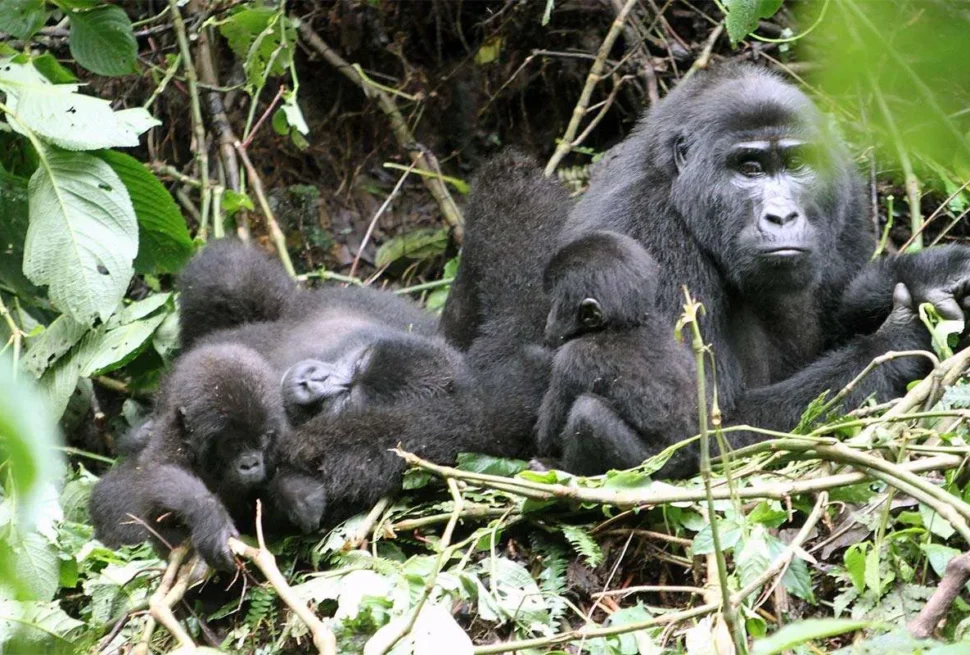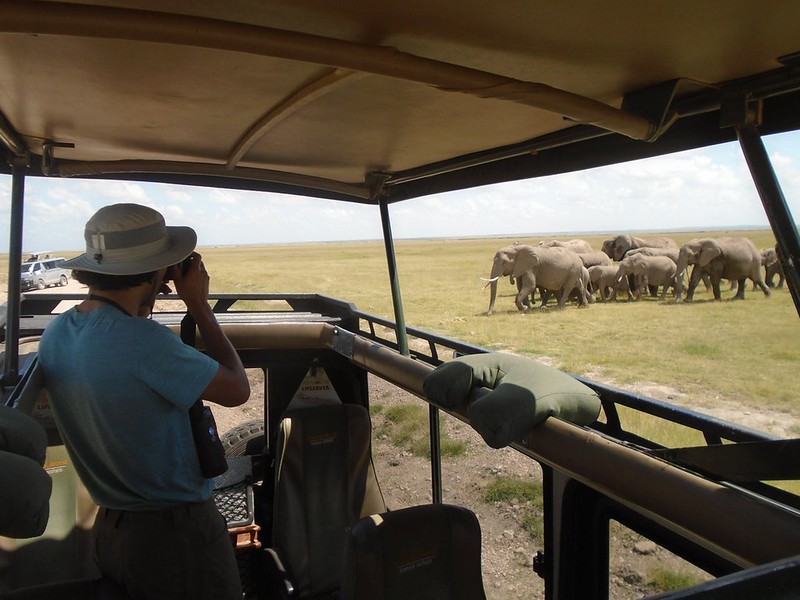Semuliki National Park – Uganda safari destination.
Situated in the southern part of Lake Albert, in the northern foothills of the Rwenzori Mountains, close to the boundary between Uganda and the Democratic Republic of the Congo, is the Semliki Valley, the first protected area in Uganda.
You may get a great feel for the Central African landscapes without ever leaving Uganda. The woods of the national park constitute the most eastern extension of the Ituri Forest in the Congo Basin and the only real lowland tropical forest in East Africa.
Those looking to explore the real Uganda without venturing to the country’s bigger, more famous attractions often visit the valley. Plus, it’s a great spot to see birds. Semuliki National Park is home to 441 different bird species, or 40% of Uganda’s total species and 66% of the forest species.
Guests can only explore the national park’s ancient woodlands, papyrus swamps, and hot springs on foot, but there are plenty of pathways to follow that will take them there.
Just beyond the park is the breathtaking Semliki Wildlife Reserve, a mix of open grasslands and riverine forests typical of savannas. Unlike the park, which is dark and obviously old, the reserve is softly beautiful, and the small number of visitors only serves to highlight this.
Conservation efforts began in 1926 in response to the large number of Ugandan kob living there. Also found there are colobus monkeys, buffalo, a species of chimpanzees who live in arid habitats, and elephants from both the forest and the savannah.
Although animal numbers are low compared to other Ugandan savannah parks owing to historically high levels of poaching, Semuliki is a wonderful example of conservation in action. If you love seeing animals and are interested in the challenges that African conservation is experiencing, Semliki is the place for you.
There are 425 different bird species in the reserve. Boat safaris departing from the reserve on Lake Albert are among the best ways to see Shoebill storks in Uganda.
The waters of Lake Albert are home to many sightings, provide a beautiful setting, and are likely to be devoid of human activity except from the occasional fisherman. Indulge in some R&R in Semliki and soak up the peace and quiet of this secluded corner of Uganda.
Safari Activities at Semuliki National Park
Chimpanzee trekking
Game drives
In Semuliki National Park, this is a popular pastime. The wide grasslands and river woodland that make up the Toro Semuliki reserve were gazetted with the express purpose of protecting the valley’s flora and fauna.
The number of animals in the park is fewer than in any other savannah park in Uganda due to the high rates of poaching by local residents. The Uganda Wildlife Authority has designated three game drive trails across the park, allowing visitors to see the area’s 53 animal species. Elephants, buffalo, water bucks, warthogs, and Uganda kobs are just a few of the wildlife that may be seen here.
Thermal Springs/ Hot springs.
Evidence of its earlier mechanisms producing hot springs suggests that species have been accumulating in Semuliki National Park for more than 25,000 years. Rising from the earth’s surface, the Semuliki hot springs reveal the immense subsurface forces that have shaped the rift valley for the last fourteen million years.

During your safari in Uganda, be sure to stop at the hot springs. There are two distinct types of hot springs in this area, and they’re called the Sempaya hot springs. You shouldn’t miss the hot springs just because you’re not in the mood for a long hike through the woods.
Located in different parts of the forest, a short boardwalk route leads to two springs called the “Male” and “Female” springs. Both historically and culturally significant, they serve as a stark reminder of the valley’s formation by natural processes.
Your guide will regale you with the anecdotes. From Semliki Safari Lodge, you may enjoy this fantastic half-day excursion.
Bird watching.
Bird watching, whether in a park or elsewhere, is what this term alludes to. Those interested in birds and their scientific significance will have a unique experience touring the park and its reserve, as they have documented over 441 different bird species.
The Uganda Wildlife Authority maintains a network of paths, such as the 13-kilometer Kirumia Trail, which passes through dense forest and ends at the Semuliki River; this route is ideal for birdwatching due to the variety of habitats it crosses.
Among these birds, you may find the ground horn bill and the shoe bill stock. Enjoy a three-hour trek through the reserve’s many ecosystems, from woodlands along rivers to savannahs, at your leisure. Predators include baboons, vervet monkeys, ground hornbills, warthogs, Uganda kos, black and white colobus, and baboons.
Hiking and nature walks
A shorter route runs along the park’s eastern boundary to the Semuliki River; hikers may see the uncommon de brazzas monkeys who inhabit the region. The 8-kilometer Sempaya nature route, which is also the park’s shortest path, takes visitors on an introduction to the park’s primates before ending at the hot springs.
Exploring this unique forest environment will be an unforgettable experience for birders and visitors looking for atmospheric locations of high scientific worth worldwide.
A guide from the Uganda Wildlife Authority may show you three different paths. The longest trail is the 13-kilometer Kirumia Trail, which winds its way through the forest to the Semuliki River. Because it cuts across several habitats, this is perfect for avian enthusiasts.
Make sure you get at least eight hours of sleep. In an attempt to see the unusual deBrazza’s monkey, which is commonly sighted in this area, the somewhat shorter Red Monkey path (11 km) follows the park’s eastern boundary to the Semliki River.
The least lengthy walk is the 8-kilometer Sempaya Nature walk. It takes you past the forest’s monkeys and on to the hot springs. The two- to four-hour trek is best done either first thing in the morning or after sunset.
Boat cruise on Lake Albert
For a better chance of seeing the rare Shoebill stork, go out on a quiet day to the mirror-like waters of Lake Albert. Taking a boat across the lake while the hazy blue mountains of the DRC provide a breathtaking background is an unforgettable experience.
The best place to see them is from the edge of the papyrus beds that mark the entrance of the Semliki river to Lake Albert. The morning boat safaris at the Semliki Safari Lodge are second to none.
As you cruise over Lake Albert, you’ll be treated to breathtaking scenery, the distant chirp of birds, the picturesque waterfalls that line the lakeshore (perfect for a picnic), and distant fishing settlements. Consequently, a boat excursion on Lake Albert should definitely be included in your itinerary for Western Uganda.
While it may be challenging to see shoebills in Semuliki National Park, a boat excursion on Lake Albert provides an opportunity to explore the wetlands around the lake in a traditional canoe.
An expert local guide will be able to pick you up from the airport and lead you around the whole area in your hunt for this uncommon species since they have greater knowledge with the body of water. You will be given the opportunity to capture a photo of the bird after you have met it.



